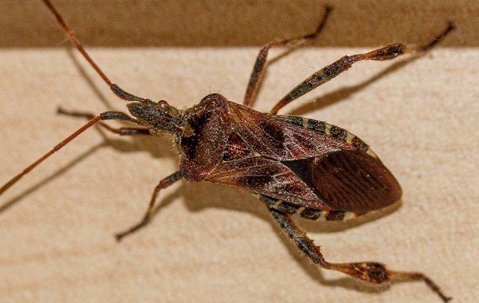When most people picture pests in their heads, a wide-range of insects will come to mind, from the creepy, crawly cockroach to the voracious, woodworking termite. To a similar degree, the creatures classified under the order of true bugs commonly denote a number of bothersome arthropods, such as stink bugs, cicadas, and bedbugs. However, one pestilent mite that most overlook in both of these categories lies in the family of seed bugs — the western conifer seed bug, scourge of the coniferous grove.
What Is The Western Conifer Seed Bug?
The western conifer seed bug is small and brown, with a similar shape and body as that of its true bug relative, the stink bug, only more elongated. Its hind legs are also longer, and the species sports a proboscis through which it consumes its meal. Perhaps the most defining feature of the western conifer seed bug is seen in its abdomen's bright yellow and black design. Take note that these colors are almost completely hidden under the bug's wings unless it's preparing for flight.
While the western conifer seed bug has been spotted moving northward and eastward, its habitat lands squarely in the Pacific Northwest, in states such as Washington, Oregon, and Idaho. As its scourged epithet would imply, the western conifer seed bug lives naturally in forests — specifically among pines, spruces, firs, and other trees of the kind. Like the stink bug, their principle method of self-defense lies in producing a foul stench that scares away predators and attackers.
More Than Merely A Nuisance
Due to its many connections to the pesky stink bug, few think of the western conifer seed bug as more than a simple nuisance – but in doing so, they greatly underestimate the insect. Its capacity to create disgusting odors might be a primary source of protection, but it may also bite people in self-defense using its long proboscis. While they spend most of their time on the trees that provide them sustenance, western conifer seed bugs seek out warmth during winter months. This search often leads them into heated Eagle homes just like yours.
In order to avoid detection, these insects frequently hide within the sidings of walls, but during the late weeks of autumn and the early weeks of spring, when they are more active, the pests may come out in swarms around the house. When these seed bugs are out and about at other points of the year, their appetites for coniferous seeds can leave a tangible effect on the life cycle of nearby groves and forests.
Tips For Warding Away Western Conifer Seed Bugs
If you do not want western conifer seed bugs disrupting the forests on your land or swarming around your Eagle home, you need to take preventative measures. But where to begin? Simply locate the area of interest, the places you wish to protect, and begin to apply some at home, do-it-yourself style tips for deterring and impeding these troublesome insects.
- Be especially careful with open doors or windows around sunset, as it is often around this time of day that seed bugs attempt to poke around for a change in locale.
- Patrol all around the house in an effort to spot and fill any gaps or cracks through which one of these insects can sneak inside. Because they can fly, be mindful of damaged areas around the roof, but pay particular attention to any open spaces near your home's foundation.
- Keep your yard free of places and objects where western conifer seed bugs can hide from predators. Copious amounts of leaves or mulch, abandoned toys, and debris are evident examples.
- If spotted indoors, do not kill on sight — rather, move the insects beyond the border of your Eagle property before killing them, as the awful smell they secrete upon death can attract even more bugs to your home.
- Do not be afraid to reach out to a pest control specialist if you need help! Advancements are constantly being made in the design of traps and sprays to specifically target seed bugs.
For total control over your Eagle property's western conifer seed bugs population, contact RAM Pest Control.
Request Your Free Inspection
Contact Us today to get your free inspection!

